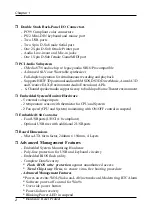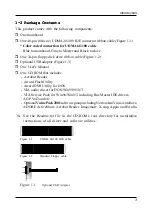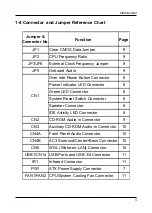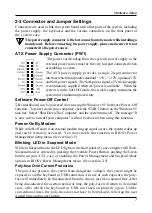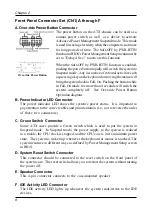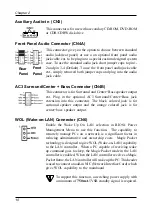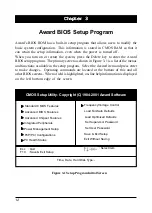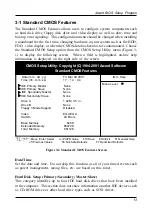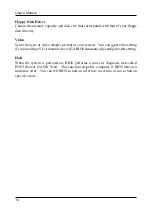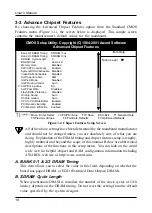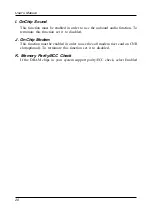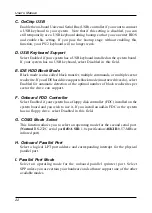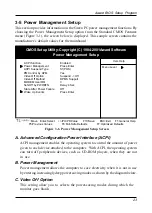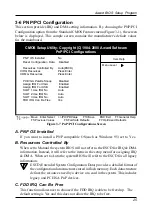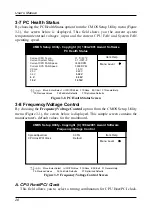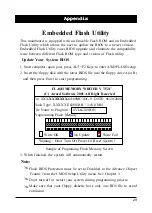
User's Manual
16
2 external cache. Both settings are left enabled to significantly increase the
performance of your computer.
C. Boot Up Features
After turning on the system, BIOS will perform a series of device initialization
and diagnostic tests discussed below.
Quick Power On Self Test (POST)
Enable this function to reduce the amount of time required to run the POST (Power
On Self Test). BIOS saves time by skipping some items during POST. It is
recommended that you disable this setting. Discovering a problem during boot
up is better than loosing data during your work.
First/Second/Third/Boot Other Device
This option sets the sequence of drives BIOS attempts to boot from after POST
completes. BIOS will search these drives for an operating system.
Swap Floppy Drive
Enabling this function will swap the floppy drive assignment so that drive A
will function as drive B, and drive B will function as drive A. Note that the
boot sequence assignment mentioned directly above does not include booting
from floppy drive B. This function is useful if floppy drives B and A are of
a different format and you want to boot from floppy drive B.
Boot up Floppy Seek
During POST, BIOS will determine if the installed floppy disk drive has 40 or
80 tracks. A 360K drive has 40 tracks and 720K, 1.2M and 1.44M drives have
80 tracks. All modern floppy disk drives have 80 tracks.
Boot Up NumLock Status
This function defines the keyboard's number pad as number keys or arrow keys.
D. Keyboard Interface
Typematic Rate Setting
When enabled, you can set the following two typematic control items. When
disabled, keystrokes are determined arbitrarily by the keyboard controller in your
system.
Typematic Rate (Chars/Sec)
The typematic rate sets the rate at which characters on the screen repeat when
a key is pressed and held down.
Typematic Delay (Msec)
The typematic delay sets how long after you press a key that a character begins
repeating.
Summary of Contents for 6VIA6
Page 33: ...30 User s Manual M e m o ...

